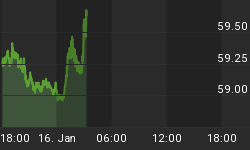As if the heavy selling pressure facing the gold market this year is not enough cause for worry, investors now have to contend with yet another challenge--waning demand by a key customer.
Jewelers in India, the world’s second largest gold buyer, have expressed fears that gold sales by the largest states in the country are likely to drop significantly following heavy rains and floods that have caused billions of dollars in damages.
Floods have wreaked havoc in the southwestern state of Kerala, killing 370 people and displacing a million others. Kerala is one of the biggest drivers of India’s $34 billion gold market, with an average wedding spending of 200 grams to one kilogram. According to B. Govindan, president of the All Kerala Gold & Silver Merchants Association, that could now be cut in half.

(Click to enlarge)
Source: Bloomberg
About 60 percent to 70 percent of Kerala’s jewelry manufacturing has been affected by floods. Although the raging floods are starting to recede, most people’s focus will be on rebuilding their lives and casual buying of gold is likely to suffer.
Shrinking Demand for Jewelry
India’s love of gold dates back thousands of years, and that has hardly changed today. Indian household are reputed to have the largest private gold holdings in the world of a staggering 24,000 tonnes. People buy jewelry during any of the country’s numerous festivities including weddings, Makar Sankranti, Dussehra, Akshaya Tritiya and Diwali. Indeed, there’s an expression that says an Indian marriage is not a marriage without gold.
Indians purchased 463.1 metric tonnes of gold jewelry in 2016, second only to China’s 612.5 metric tonnes and more than three times third-placed U.S.’ 138.2 metric tonnes. Related: The Impending Artificial Intelligence Shakeout
More than half the world’s gold production every year goes into jewelry. India’s central bank is also a top 20 gold buyer.

(Click to enlarge)
Source: Statista
Yet, the floods might merely serve to exacerbate an already unfolding situation.
According to the World Gold Council, gold demand in the country dipped eight percent in the April-June quarter from 202 tonnes during last year’s corresponding quarter to 187 tonnes.
Jewelry demand fell eight percent at 148 tonnes while investment demand fell by a smaller margin of five percent to 39 tonnes. Total gold recycled, however, climbed eight percent to 32 tonnes.
But most alarmingly, gold imports fell 38 percent at 171 tonnes due to weak demand. The bullion industry has grown wary of imports since a major portion of shipped gold is not on a consignment basis. Earlier, jewelers who imported on a consignment basis used to receive a 180-day credit to turn the bullion to jewelry and sell it before paying for the imported gold.
Related: Cannabis Stock Valuations Are Spiraling Out Of Control
But nowadays, jewelers not only have to pay for the bullion in advance but they also pay a three percent GST(Goods and Services Tax) the moment it’s out of the customs house. This has forced jewelers to become more efficient in supply-chain management, and they are now avoiding stockpiling bullion.
Electronic Gold
But there’s still hope on the horizon.
India’s massive gold market has always been driven by face-to-face transactions. But now, for the first time, the idea of digital payment systems and buying gold online is rapidly gaining traction ever since the Indian government stopped producing large-value bank notes in 2016.
Computer software applications that let users buy, sell or keep gold are now proliferating in the country and digital gold transactions are expected to see big growth over the next 24 months. Products such as Gold Accumulation Plans that allow users to buy and store amounts of as little as 0.1 grams is likely to encourage more Indians to invest in gold directly. That might help offset lower demand for jewelry.
By Alex Kimani for Safehaven.com
More Top Reads From Safehaven.com

















